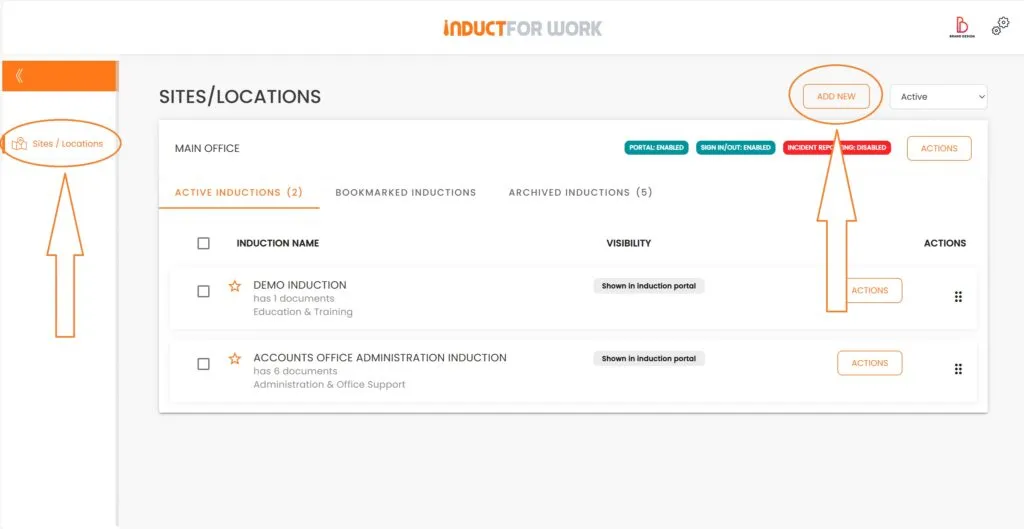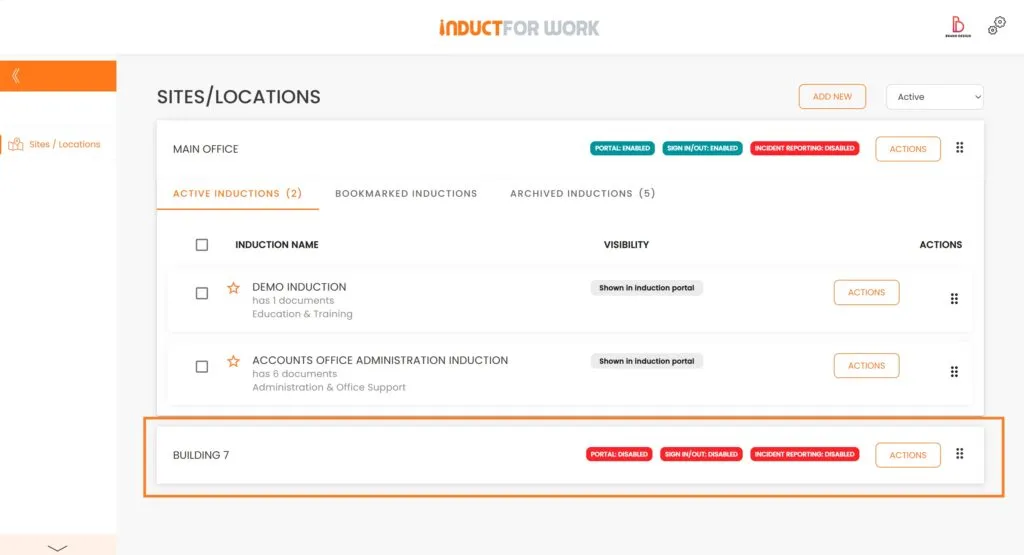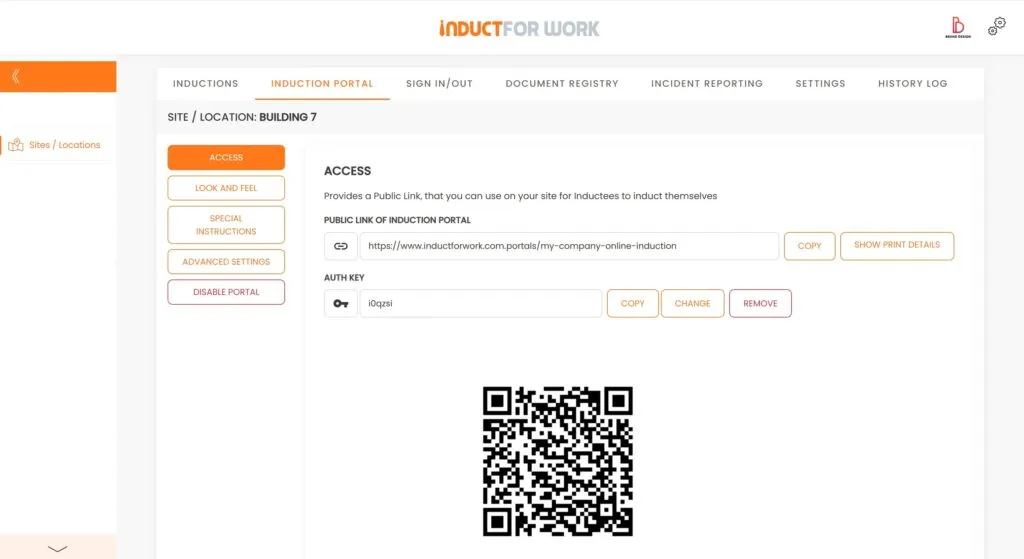9. Multiple Portals
In our previous training session we have covered what is a Portal and how to set it up, but you might have to create an additional Portal or two.
To do so we will go to Site Inductions and click on ‘Add New”.

After completing the form with details such as the Portal name and address, you will see your new Portal displayed below.

To enable the Portal URL, click on ‘Portal: Disabled’ and then select ‘Enable’. Once it is active, all the standard Portal features will be accessible.

Now, let’s discuss various scenarios where you might need to activate several portals.
Scenario 1
Description: Company ‘A1’ has operations across Europe.
Requirements: Every worker, contractor, and sub-contractor is required to complete the general annual induction and any site-specific inductions. Upon completion, they must submit their licenses, qualifications, and other compliance documents.
Suggestion: Company ‘A1’ could establish individual portals for each Country. Following this, ‘Licenses and Permits’ can be activated, and Admin users assigned to their respective State Portals to oversee and manage the local workforce and inductions.
This system could also benefit, but is not limited to, Building Contractors, Suppliers, Manufacturers, Health and Educational Services, and Sports Venues.
Scenario 2
Description: Your company ‘A2’ is an event organizing company that hosts multiple events.
Requirements: Every worker, contractor and sub-contractor is required to complete a general induction and any site-specific inductions. During the induction process, they must present their current licenses, qualifications, tickets and other compliance documents. All ‘Near Misses’ or ‘Incidents’ must be reported immediately.
Suggestion: ‘A2’ should establish individual Portals for each event, enabling ‘Licenses and Permits’ and ‘Incident Reporting’ features.
This system could also be beneficial for TV production companies, city councils, manufacturing and warehousing businesses, health and educational services, sports venues, among others.
Scenario 3
Description: The Government Body ‘A3’ oversees multiple Departments, each with its own set of Buildings and a workforce comprising internal staff and Contractors.
Requirements: All managers, workers, and contractors are required to complete induction training. Contractors must also submit compliance documents. Upon arrival at any building or site, contractors are required to sign in. Any ‘Near Miss’ or ‘Incident’ must be reported immediately.
Suggestion: The Government Body ‘A3’ should establish a series of Portals, one for each Department. Multiple administrative users can be assigned to manage these Portals. Features such as ‘Licenses and Permits’, ‘Documents and Signatures’, ‘Sign-in’, and ‘Incident Reporting’ should be activated.
Given the structural complexity of the Organisation, ‘Induct For Work’ staff should be employed for the initial setup and to provide face-to-face training to all administrators.
This setup could be appropriate for, but is not limited to, Federal, State, and Local Government bodies, as well as sectors like Banking, Mining, Retail, Automotive, Universities, Hospitals, Schools, and Manufacturing Facilities.
Scenario 4
Description: Your multinational corporation ‘A4’ collaborates with numerous local and interstate contractors. Each contractor employs a variety of staff, including permanent employees, casuals, and subcontractors.
Requirements: Before any worker can enter or work at your site, they must complete ‘A4’ inductions, and the contractor they represent must be approved by ‘A4’ for having current compliance documents. All workers are required to sign in and out upon arriving at and departing from ‘A4’ worksites. Any ‘Near Miss’ or ‘Incident’ must be reported immediately. Contractors must also have the capability to manage their own induction training and inductees.
Suggestion: Your organization ‘A4’ should establish its own portal to host all inductions and create individual portals for each contractor. Admin users will be assigned to their respective roles and portals. Features such as Induction Courses, ‘Licences and Permits’, ‘Sign In/Out’, and ‘Incident Reporting’ should be activated and set up.
Given the structural complexity of your organization, ‘Induct For Work’ staff should be involved in the initial setup and provide face-to-face training for all your administrators.
This setup could also be beneficial for industries including but not limited to Banking, Mining, Energy, Electronics, Automotive, Transport, Manufacturing, Export, Retail, Universities, Hospitals and Schools.
This brings us to the end of this Training Session. Please continue to Session #10 to learn how to Manage Inductees/Users. Thank you.

